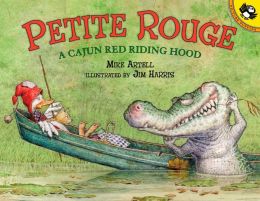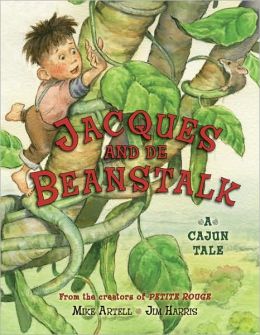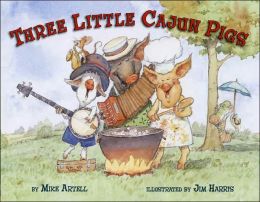The more you read the books the more fun they are to read. You know when your kids want you to read the same story over and over again and you can barely make yourself crack open the cover? Well, I never get tired of reading these.
 Start with Petite Rouge: A Cajun Red Riding Hood. When Little Red Riding Hood's grand-mere comes down wit' de flu, Red and her cat, TeJean, know just what to do. In keeping with the bayou setting, Red Riding Hood encounters Claude, a swamp gator, instead of the big, bad wolf. Claude is no match for Red and TeJean and they send Claude racing back to his home.
Start with Petite Rouge: A Cajun Red Riding Hood. When Little Red Riding Hood's grand-mere comes down wit' de flu, Red and her cat, TeJean, know just what to do. In keeping with the bayou setting, Red Riding Hood encounters Claude, a swamp gator, instead of the big, bad wolf. Claude is no match for Red and TeJean and they send Claude racing back to his home.The next fairy tale Mike Artell puts a Cajun twist on is Three Little Cajun Pigs. Claude, the ol' gator, couldn't make a lunch out of Red Riding Hood so now he's got his eyes on three little pigs whose mother just kicked them out.

And finally, Jacques and de Beanstalk. Meet Jacques, a little boy who sells the cow for a few beans. His mother is furious and throws them out the window. A giant beanstalk grows and you know the rest of the story. But Jack and the Beanstalk has never been so fun to tell. There's something about reading Mike Artell's Cajun couplets that makes me wish, just a tiny bit, I was born in the bayou.

![Mastering the Art of Soviet Cooking: A Memoir of Food and Longing | [Anya Von Bremzen]](http://ecx.images-amazon.com/images/I/510D1rslSeL._SL300_.jpg)